 There’s thousands of glues, lacquers, shellacs, and cements, but no such thing as “head cement,” that’s a term we invented to describe grabbing a gallon jug of something used in the woodworking industry, decanting into a tiny little jar and selling it for 97 times what the jug costs.
There’s thousands of glues, lacquers, shellacs, and cements, but no such thing as “head cement,” that’s a term we invented to describe grabbing a gallon jug of something used in the woodworking industry, decanting into a tiny little jar and selling it for 97 times what the jug costs.
Fly tying cements are one of two types; the vinyl cement family, and the lacquer-shellac family. A good rule of thumb is high gloss = lacquer, and dull = vinyl cement.
Vinyl cement is available in many viscosities – and most of those sold in fly shops are thinned to a water consistency for maximum penetration. Lacquer is usually thicker and is almost always sold with thinner, allowing you to customize the mix to your liking.
Lacquer gets thicker as it gets older and is subjected to oxygen, vinyl cement mostly evaporates with exposure to air – without changing viscosity. Most tiers have both in their desk; vinyl cement is flexible and works well with feathers, lacquer dries shinier, harder and is brittle.
Both have great qualities, reinforcing a feather to make a wingcase would be vinyl cement; it doesn’t add shine, is more flexible than lacquer, and the first couple of fish won’t destroy feathers as it retains some of the original flex despite the coating. Exposed thread would be best served with lacquer as it dries harder and often the shine is desirable, like the larger exposed heads of steelhead or salmon flies.
Last year I wrote where to find cheap vinyl cement but I never touched on the glossy lacquers and what to look for…
I prefer the nitrocellulose lacquers once used in the automobile industry (which has since shifted to water based lacquer). These are the thin lacquers used with spray guns and are now used for finishing musical instruments.
Violins and guitars derive much of their sound from the resonance of the body, and a hard glossy lacquer is preferred to enhance its musical qualities (I assume a flexible sealer would dampen sound).
I buy the Lawrence-McFadden lacquers by the quart ($18.00), along with a quart of thinner ($10.65) and either use it as a 50/50 mixture for general fly tying – occasionally using it un-thinned for the “large head” flies, where gloss is part of the overall presentation.
Nitrocellulose lacquers produce a very hard yet flexible, durable finish that can be polished to a high sheen. Drawbacks of these lacquers include the hazardous nature of the solvent, which is flammable, volatile and toxic.
Decanting and resealing the larger containers has always led to quarts of wasted wood finishing products lining your garage, and how each time you’d opened one it had turned into a dried hardened mass.
Instead of pouring into a smaller container, save a couple of straws from your favorite fast food vendor – those big round ones that induce an aneurism because the milk-shake-substance hasn’t thawed yet.
Cut one of those about two inches above the height of your quart jug. When you need to refill your bench bottle – just press it down into the lacquer and when it hits bottom put your finger over the end. Hold your small bottle over the lacquer jug and transfer the straw – about three trips with the straw and you’ve filled a head cement bottle half way, repeat with the thinner, and stir. Toss the straw when you’re done.
No mess, no drips, and the large cans reseal tightly so you get to use all the goody.
I’m not sure how many years two quarts of head cement represents – but to a casual tyer it’s measured in decades. Store-bought head cement is at least $5 per bottle – double that if you buy thinner, so it’s a considerable savings over their product – whose bottles often leak or evaporates the product anyhow.


 First Winston Rod and now Orvis.
First Winston Rod and now Orvis. 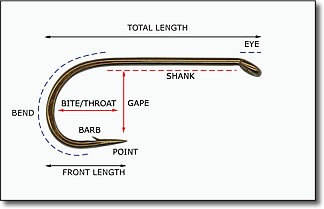
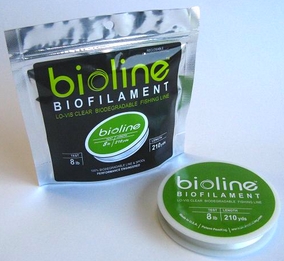 Forgetting to purchase new tippet each season is an Opening Day ritual. Some fish slurps your offering, looks bigger than average, and you’re reduced to sweating bullets knowing 6X is more like 9X due to oxidation.
Forgetting to purchase new tippet each season is an Opening Day ritual. Some fish slurps your offering, looks bigger than average, and you’re reduced to sweating bullets knowing 6X is more like 9X due to oxidation. There’s thousands of glues, lacquers, shellacs, and cements, but no such thing as “head cement,” that’s a term we invented to describe grabbing a gallon jug of something used in the woodworking industry, decanting into a tiny little jar and selling it for 97 times what the jug costs.
There’s thousands of glues, lacquers, shellacs, and cements, but no such thing as “head cement,” that’s a term we invented to describe grabbing a gallon jug of something used in the woodworking industry, decanting into a tiny little jar and selling it for 97 times what the jug costs.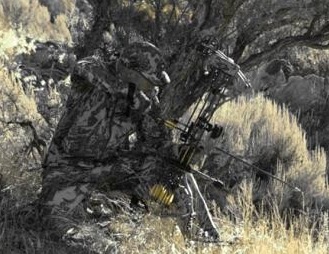
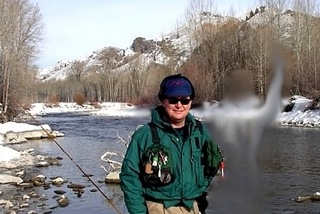 How about me standing next to
How about me standing next to 
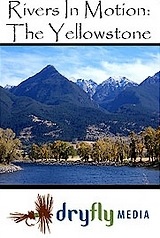 The lads at DryFly Media sent me a DVD entitled: “
The lads at DryFly Media sent me a DVD entitled: “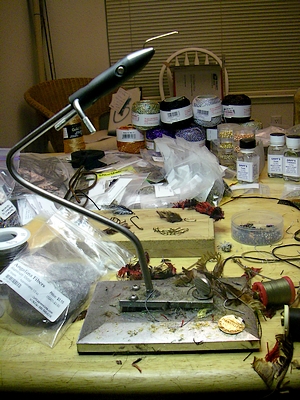 I’ve known it by many names – but mostly it’s “the vise I can’t get rid of…”
I’ve known it by many names – but mostly it’s “the vise I can’t get rid of…”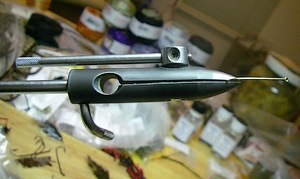 It appears the only change to the vise is the presence of a “knurled” knob where the Allen screw used to be. We modified the design by rotating the head 180 degrees (so the tightening lever is on the far side) and replaced the screw with a small “L” shaped bar of metal so we could rotate the jaws into a new position by pressing your palm against the bar.
It appears the only change to the vise is the presence of a “knurled” knob where the Allen screw used to be. We modified the design by rotating the head 180 degrees (so the tightening lever is on the far side) and replaced the screw with a small “L” shaped bar of metal so we could rotate the jaws into a new position by pressing your palm against the bar.